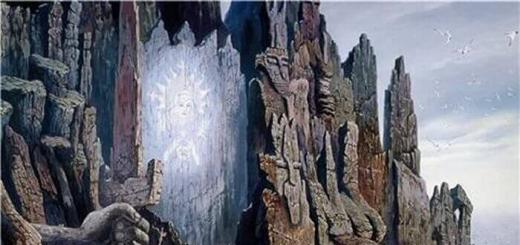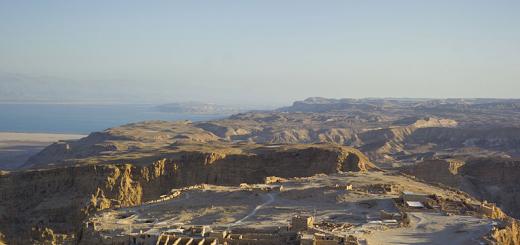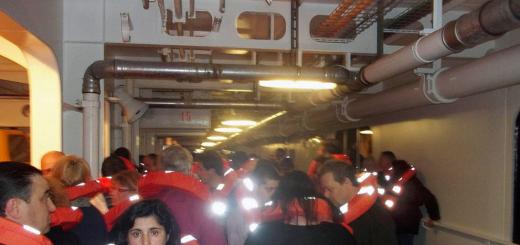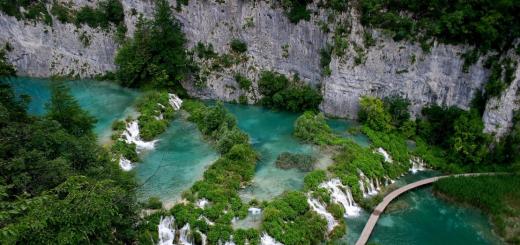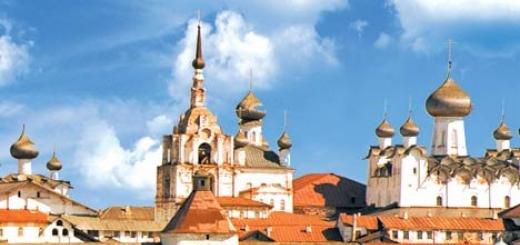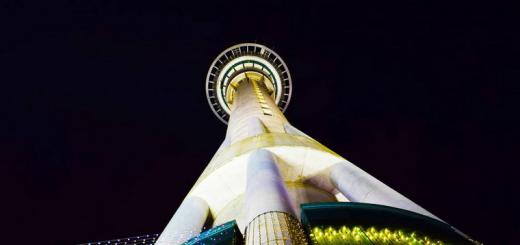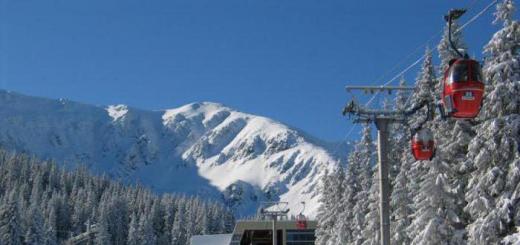Steep cliffs pine forests, romantic bays and beautifulbeaches - everything here breathes beauty and preaches splendor.
Lerici, Porto Venere, Palmaria Island, the islets of Tino and Tinetto and the city La Spezia, the "queen" of the beautiful bay ...
La Spezia (ital. La Spezia) is the largest city of the beautiful Gulf of Poets, which is often overlooked by travelers, perhaps because it is surrounded by the most famous resorts of the Ligurian coast. However, the town of La Spezia, having become today a "transit point" for foreigners who go to the Cinque Terre, "suffers" undeservedly, because once it was adored by writers and poets, the English lyricist Percy Shelley was especially fond of being here, calling La Spezia "Blue the city of dreams and love "...
The city is located in the very east, just a few kilometers from the border with, on the shore of the sea bay, which is called the "Gulf of Spices" (Golfo della Spezia), its other name is the "Gulf of Poets" (Golfo dei Poeti). The second name for the bay was fixed thanks to the visits of poets, writers, artists, actors to these places, attracted by the beauty of the “water amphitheater”. Spice's frequent guests included David Herbert Lawrence, George Sand, Lord Byron, Percy Bysshe Shelley and many other creative personalities in Italy and Europe. The bay is surrounded by a chain of hills and mountains, the highest of which, Mount Verrugoli with a height of 750 meters, is located on western outskirts Spice.
Bay of Spices. Photo by Thinkstock
How to get to La Spezia?
By plane

La Spezia. Photo flickr.com
By car
In addition, the state highways SS-1 (Aurelia), SS-62 (Sarzana -) and SS-63 (Massa - Verona) pass through La Spezia.
By train

La Spezia. Photo flickr.com
By sea
In the spring-summer period, passenger sea transport runs, connecting La Spezia with the ports of Genoa, Portofino, Lerici, Portovenere, the island of Palmaria, and a national park.
Where to stay in La Spezia?
After the fall of the Roman Empire, from the 5th century, La Spezia was attacked by the Germanic tribes of Herul and Goths, and with the end of the Byzantine-Gothic wars in the middle of the 6th century, the territory of modern La Spezia came under Byzantine rule, becoming part of the Italian Exarchate - the Byzantine province on the Apennine Peninsula.
In 642, the area of La Spezia was conquered by the Longobards, after the fall of the kingdom of the Longobards in 773, the territory came under the rule of King Charles I the Great of the Franks. In 860, La Spezia was plundered by the Vikings, in the same century, she had to survive the devastating raids of the Saracens, which led to the complete decline of the area.
Gradually, inhabitants of neighboring cities began to move here, and in the X-XI centuries a fortress city was formed on a hill, which by the middle of the XII century came under the rule of Genoa. By this time, La Spezia became an important trade center. In the XIII-XIV centuries, the city reaches its heyday, thanks to which in 1343, at the behest of the first Genoese doge Simone Boccanegra, the Podestat of La Spezia was formed, which, however, by the end of the XIV century, after the continuous struggle between Genoa and Venice, ceased to exist, and La Spezia passes under the rule of the Milanese Visconti dynasty.
In the 15th century, the city continues to develop as a large shopping center... In 1654, in order to give a new impetus to the trade direction, the Republic of Genoa allowed Jews to settle in La Spezia, new markets and exchange fairs appeared in the city. In 1797, with the fall of the Genoese Republic, La Spezia becomes part of the Ligurian Republic, which since 1805 has entered under the protectorate of France. With the end of the power of Napoleon, La Spezia passes to the Kingdom of Sardinia.
By the time of the unification of Italy in 1861, La Spezia had about 6 thousand inhabitants. The city begins to actively develop as tourist centre In the 19th century, members of the royal family often came here on vacation. By 1901, about 73 thousand people lived in La Spezia.

New bridge in La Spezia . Photo flickr.com
Attractions in La Spezia
Fortress of St. George
(Castello di San Giorgio)
It is from here that you should start your visit to La Spezia, because from the top of the Colle del Poggio hill, on which the castle of San Giorgio stands proudly, opens great view the whole city and its bay. The fortress was built in 1262 and originally served as a shelter during the wars for both soldiers and townspeople.
Castello San Giorgio acquired its final appearance, which can still be admired today, in 1607, when the observation towers were completed and the outer walls were fortified.
To this day, almost nothing has remained of the original structure of the fortress; over the centuries it has been repeatedly restored and restored. Currently, the fortress houses Archaeological Museum and there is a beautiful park next to the fortress.

Fortress of St. George. Photo guideturisticheliguria.eu
Museum of the Navy
(Museo Tecnico Navale)
Viale Amendola, 1
The Navy Museum is considered largest museum of this kind in Italy. The museum displays more than 150 models of Italian ships, about 2,500 awards, 6,500 relics, including a collection of naval figures from the 15th-17th centuries, thousands of historical and technical documents.
The museum is located next to the main entrance to the La Spezia naval arsenal, founded by the first Italian Prime Minister Cavour in 1862. The arsenal is operational, employing over 1,000 civilians and 200 military personnel.

Museum of the Navy. Photo ottante.it

Some of the exhibits maritime museum... Photo mareonline.it
Villa Marmory
The Marmory family residence was built in 1923 by the architect Franco Oliva; considered one of the finest examples of Ligurian floral architecture, it is located on Via XX Settembre.
The frescoes and stuccoes that still adorn the villa are of the hand of master Luigi Agretti, while the paintings specially commissioned for the halls of the villa are by Disovolo and Ferri (the canvases are now kept in the local museum). Pay attention to the stained-glass windows of the villa, created by Beltrame, very beautiful, made with a special technique, filtering and scattering sunlight between the rooms and halls of the villa.
Since 1984, Villa Marmory has sheltered in its halls the Academy of Music. Giacomo Puccini.

Villa Marmory. Photo zonzofox.com
Cristo Re Cathedral
Impressive temple overlooking central square Europe is located on a small hill where the Capuchin monastery was once located.
In 1929, a competition was held to build a new cathedral that would replace the Church of Santa Maria Assunta. The winner of the competition was the architect Brennero Del Giudice, but his project was frozen until 1956, and then completely redesigned by the architect Adalberto Libera, and in the implementation of the original project was partially revised by Cesare Galeazzi. The temple was consecrated only in 1975.
The interior of the temple is very beautiful: twelve massive columns with the names of the apostles surround the altar and pulpit, made by the sculptor Leah Godano from marble quarried in the Apuan Alps. The church is not decorated with traditional frescoes, the walls in the initial project had to be decorated with mosaics, which were never realized. Inside the cathedral are the remains of San Venerio, patron saint of the bay, San Terenzo and Sant'Euchiano, the ancient bishops of Luni.

Cathedral of Cristo Re. Photo flickr.com
Church of Santa Maria Assunta
Chiesa di Santa Maria Assunta
The Abbey Church of Santa Maria Assunta, the first Cathedral of La Spezia, stands in Piazza Beverini. Its construction dates back to the thirteenth century and it is the oldest church in the city.
The church was badly damaged during the bombing of the Second World War. After the war, in 1954, it was restored and equipped with a new facade. The central entrance of the church is decorated with 8 relief images of deeds of mercy. Adjacent to the church are the Chapel of Mercy, the Chapel of the Sacred Heart and the Chapel of the Immaculate Conception.
The church keeps many interesting artistic and historical evidences: the terracotta by Andrea della Robbia "Coronation of the Virgin", the icon "Martyrdom of St. Bartholomew" by Luca Cambiaso, canvas from 1642 by Casone Giovanni Battista, a 16th century font, marble statues of Our Lady and St. Anthony, as well as sarcophagi, in which rests the remains of the commander of the papal fleet Baldassarre Byassa and his wife.

Church of Santa Maria Assunta. Photo flickr.com
Church of Saints Giovanni and Augustine
Chiesa dei Santi Giovanni e Agostino
The church, which sits behind Piazza San Augustino, was built in the sixteenth century as a burial place for the departed poor. Outwardly unremarkable building keeps rich baroque decoration within its walls.
The interior of the temple consists of a single nave, 40 meters long, covered with rich Baroque decor, which was often restored and re-touched in the eighteenth and nineteenth centuries. There are no particularly valuable works of art inside, but visitors will be interested in looking at the ancient crucifixes of the 18th century, the 16th century altar by Bernardino Lanino and the 1823 organ by the Serassi brothers.

Church organ. Photo flickr.com
Palazzo Crozza
Along Corso Cavour is Palazzo Crozza, the historic residence of the Crozza noble family, built in the mid-nineteenth century.
Classical and elegant, the palace presents visitors with a beautiful façade and an equally beautiful, ornate interior. Today it houses the headquarters of the city archive, which contains historical documents from the fifteenth to the nineteenth century. The upper floor of the palazzo, shining with two large rooms and a luxurious front staircase It contains an interesting collection of paintings belonging to the collections of Luigi Agretti, and currently houses the public reading room of the Ubaldo Mazzini library.

Palazzo Castrucci. Photo flickr.com
Fish market
Piazza Cavour
A fish (and gastronomic) market is held every morning in Place Cavour, under the arches of a large covered structure that turns into a haven of antique stalls on the first Sunday of the month. The market is divided into two parts: on one side of the square there are only fishmongers, while on the other side you will find stalls with fruits, vegetables, cheeses, spices, herbs and flowers. Many bakeries, bars, pubs, restaurants, shops and major museums are located around the square. All in all, this is a place that is definitely worth a visit.

Fish market. Photo flickr.com
Sanctuary of Madonna del Olmo
Santuario della Madonna dell "Olmo
The Sanctuary of Madonna del Olmo is located on the slopes of Mount Santa Croce, on a picturesque hill overlooking the village of Fabiano, on the western side of the Gulf of Poets, at an altitude of about 280 meters above sea level. The sanctuary dedicated to Our Lady was built in 1844. This sacred place for pilgrims is located just a few kilometers (about three) from the center of La Spezia. The small, unremarkable church inside contains many treasures: as an example, we will cite the church altar, made in the Baroque style, and the beautiful image of the Madonna del Olmo, kept in the sanctuary. To reach the church, you must take the SP530 provincial road, take the exit (almost immediately) onto via sant "andrea and climb Mount Santa Croce.
Verdi Square
Piazza verdi
This is one of the most important squares in the city. Many famous Palazzo La Spezia are located here: Palazzo delle Post, built in neo-fascist style, Palazzo degli Studi, where the Classic Lyceum is currently located, and - on the corner between Via Vittorio Veneto and Piazza Verdi - Palazzo Prefecture and Palazzo della provincia.

Piazza Verdi. Photo flickr.com
Ethnographical museum
(Museo Civico Etnografico)
Ethnographical museum named after the traveler, naturalist, ethnographer Giovanni Podenzana, tells about the life, folk traditions and customs of the people who inhabited the Lunigiana region in the 18th-20th centuries.
Amedeo Lia Museum
Museo Civico d "arte antica, medievale i moderno" Amedeo Lia "
Via Prione, 234
The museum was opened in 1996 thanks to donations from the patron Amedeo Lia and his family. The museum collection contains over 1,100 works of art - from icons to jewelry; from liturgical objects to paintings by famous Italian painters dating back to the thirteenth century such as Giotto and his students, Bernardo Daddi, Duccio, Pietro Lorenzetti, Simone Martini, Lippo Memmi, Sano di Pietro, Taddeo di Bartolo, Bicci di Lorenzo , Fra Angelico, Romanino, Veronese, Titian, etc. The museum also contains many fine sculptures in wood, bronze and marble.

Museum Amedeo Lia. Photo flickr.com
Modern Art Museum
Centro Arte Moderna e Contemporanea della Spezia (CAMEC)
Piazza Cesare Battisti
Opened in 2004, the Camec Museum occupies three floors and houses three separate collections - Cozzani, Battolini and Premio del Golfo. The collection of Giorgio Cozzani contains more than 1200 sculptures and canvases donated to the museum by a philanthropist in 1998. Most of the works presented belong to abstractionism, surrealism and expressionism. The next collection, once owned by the Battolini couple, includes 500 works by contemporary artists from around the world. The third collection is constantly renewed with works that have won the CAMEC painting competition, "Premio del Golfo", which is held every two years. Today the exposition contains over 300 exhibits.
Lerici Castle Museum
Museo Castello di Lerici
Piazza San Giorgio, Lerici, La Spezia
Lerici Castle is a polygonal fort that, perched on a high rocky promontory, dominates the town of Lerici, located near La Spezia. The castle was built in 1152 and went through numerous renovations by engineers maritime republics Genoa and Pisa, who fought for the castle because of its strategic location. Only in 1555, the castle began to take the modern appearance to appear before the eyes of visitors today as the quintessence of various architectural styles - from Genoese to Gothic.
On the ground floor of the Lerici castle, there is the chapel of St. Anastasia, luxuriously decorated with black and white Ligurian marble.
In 1998, the fort was rebuilt to house a paleontological museum with a good dinosaur exhibit that will appeal to both children and adults.
San Giorgio Castle Museum
Via XXVII Marzo
The recently renovated castle houses an archaeological museum that contains relics from ancient times. On the ground floor there is a collection of archaeological finds belonging to the Neolithic and Eneolithic eras, where you can admire the ancient stone statues of Lunigiana (anthropomorphic sculptures marking the territory, decorated with precious stones and weapons), finds from the Iron Age and Bronze Age, finds from the necropolis. The top floor is dedicated to the ancient Roman and medieval period. For the most part, these are materials from the Fabricotti collection: architectural elements, statues, portraits, mosaics.
City Park
The city park or, more precisely, the garden, is rich in its botanical diversity; here you can see palms, spruces, oaks, cedars, magnolias, roses and many other plants. The first park in La Spezia was laid out in 1825, and by the end of the 19th century it had expanded to almost its present size. The park is decorated with numerous sculptures, among which there is a monument in honor of Giuseppe Garibaldi.

City Park. Photo noidelteatro.blogspot.it
What to see near La Spezia?
While in La Spezia, be sure to visit the Cinque Terre, an object World heritage UNESCO, as well as Portovenere, located in the Gulf of Poets, and the nearby islands of Isole di Palmaria, Tino and Tinetto.
You can drive to medieval town Sarzana with its majestic castle and nearby Varese Ligure with its ancient streets and a wonderful cheese market.

Lerici. Photo by Thinkstock
"Bay of Poets"
The wide and deep bay of the Ligurian Sea has been called the "Bay of Poets" since 1919, when playwright Sam Benelli, while on vacation in a luxury villa overlooking the sea in San Terenzo (Lerici), wrote his most important work, "The Dinner of Ridicule."
It got its nickname "The Bay of Poets" because over the centuries, many poets, writers and artists, fascinated by the beauty and romance of these lands, drew inspiration for their best works.

Rainbow over the Bay of Poets. Photo flickr.com
The bay is washed by the municipalities of Portovenere, La Spezia and Lerici, charming towns overlooking the sea, surrounded by green hills.
On the border of Liguria and Tuscany is located nature Park Montemarcello Magra, rich not only in natural, but also in cultural and historical values.
Alternatively, admire the natural beauty of Cape Caprione, an ideal starting point for many excursions, and visit Botanical garden Montemarcello.
Festivals in La Spezia
A vibrant traditional festival Palio del Golfo(Palio del Golfo) takes place on the first Sunday in August and consists of a boat competition between 13 borgoes located in the "Bay of Poets". After the award of the palio, the celebration continues with musical performances, food fairs and theater performances under open air... The boat regatta has been held annually since 1929 as part of the Levanto Maritime Festival. Thousands of tourists come to see the colorful spectacle every year.

Palio del Golfo. Photo flickr.com
San Giuseppe Fair(Fiera di San Giuseppe :) is held for three days, starting March 19, in honor of the feast of St. Joseph.
This annual food and non-food fair brings together about 1000 participants and many guests.
What to try in La Spezia?
Locally sourced and black pepper are indispensable ingredients in most culinary recipes. Spices, among which the most popular is "meschua", which in the local dialect means "mixture" - soup made from beans, wheat and chickpeas.
Typical Spice dishes include delicious tortillas that are only baked here; chickpea flour stew; "Sabei" - fried cakes made from yeast dough filled with cheese, ham, or, in a sweet version, made from cream or chocolate; stuffed pumpkin flowers; vegetable casseroles. In the suburb of La Spezia, Pittelli prepares especially delicious ravioli with meat, potatoes and herbs, and Campiglia is famous for the cultivation of saffron.

Sgabey from Spice. Photo universocucina.com

Pumpkin flowers stuffed with soft goat cheese. Photo nerodiseppiae.blogspot.it
La Spezia is famous for its fish market, where fresh seafood can be found every morning. It is no coincidence that one of the local specialties is stuffed mussels, which are specially bred here.
Spices worth noting are the white Colli di Luni DOC and Cinque Terre DOC.
(Riviera Ligure del Levante). It does not belong to tourist, however, it is quite interesting in itself, with its sea and mountains. In the summertime, there are, in fact, many tourists who travel along the famous route: Monterosso, Vernazza, Corniglia, Manarola and Riomaggiore, which were included in the UNESCO list in 1997 and stay here.
The city is located in the bay of the same name, also called the Gulf of Poets, as a threshold of the territory near the Apuan Alps. There are other World Heritage Sites nearby: Porto Venere and the islands of Palmaria, Tino and Tinetto. You should definitely spend the day walking around the city, visiting its main attractions and exploring the surrounding area. For lovers of the history of sailing will be the best place for entertainment, and the prices for accommodation will pleasantly surprise.
Most of its development is due to the naval weapons factory, built here in 1860. In 2009 the city became the second largest in Liguria: 95635 inhabitants. People have lived here from time immemorial, and development took place during the Roman Empire in the Luni area, near modern Sarzana. In the 13th century. became the center of the Signoria Fieschi and thus established strong ties with Genoa. Despite its proximity to Tuscany, more precisely to the cities of Massa and Carrara, it is a purely Ligurian city. The influence of Genoa can be seen today in cities, their buildings and types of decorations. There was also the naval prefecture of the French Empire and later the Duchy of Genoa in the Kingdom of Sardinia. After the transfer of the navy from Genoa in 1857, the city became the main naval base, and in 1923 - the center of the province of the same name.
After the Second World War, it became a refuge for Jews who survived the concentration camps. From the summer of 1945 to the spring of 1948, more than 23,000 Jews managed to secretly leave Italy. The ships "Hope", "Phoenix" and "Exotus" left the bay with a large cargo of humanitarian aid from the city, which on Israeli maps is called the Gate of Zion (Porta di Sion).
The streets are filled with the scent of bergamot. The houses are usually accompanied by a 19th century style garden with palm trees; this is especially typical of the houses on the street of Kyodo. Classical architecture, Liberty style villas, wide streets and embankments, St. Augustine square(Piazza Sant Agostino) resurrect the past. Now the city center is completely pedestrianized, and on Pronne street there are many shops and stalls - this is one of the busiest streets in the city.
Attractions La Spezia

The historical center attracts tourists: a little mountain "serpentine", old mansions have been preserved here. Among other things, there is the opportunity to visit the medieval San Giorgio castle(Castello medievale di San Giorgio) with Ubaldo Formentini Museum(Museo Civico Ubaldo Formentini), Museum of Printing(Museo del Sigillo), Amadeo Lia Museum(Museo Amadeo Lia), Naval museum(Museo Navale) and Armory(1861-1869, reconstructed from 1945). Religious monuments presented Cathedral of Christ the Savior(Cattedrale di Cristo Redentore) with unique architecture and Assunta Abbey(Abbazia dell'Assunta), containing important works of art.

The embankment with the park offers a view of the immense horizon. From the central railway station located in the Piazza Medaglie d'Oro, you can get to Lerici, San Terenzio and Sarzana. The other two stations are Migliarina and Ca 'di Boschetti.
Holidays La Spezia
Many seasonal festivals are held in La Spezia: Festival of Saint Giuseppe(March 19), also called the fair of Saint Giuseppe, the patron saint of the city, when more than 600 shops from all over the peninsula open here; Festival of the Sea (first Sunday in August), a picturesque boat race; musical such as International Festival jazz and pop festival.
With vineyards and olive groves surrounding the city, wine and olive oil are an integral part of local feasts. Be sure to try the dishes local cuisine: Salted Monterosso anchovies with olive oil and other fish dishes, as well as focaccia.
Beaches overlooking the crystal clear sea, picturesque towns in the bays behind which stretching valleys buried in greenery, romantic traditions of antiquity: all this and much more awaits tourists in the province of La Spezia.
One of the most interesting sites on the Ligurian Riviera can be found here: Golfo dei Poeti - The Bay of Poets, so named because many great writers and poets have shown their love for this land. Steep cliffs, dense pine forests, romantic coves and exceptional beaches ...
Province of La Spezia map

More about the province
Together with the picturesque villages perched on the top of the cliff, they create a coastal landscape that amazes those who see it from the sea side with its beauty.
Lerici, Portovenere, the island of Palmaria and the islets of Tino and Tinetto are the most famous routes of this tourist destination.
Further, to the northwest, is one of the most beautiful regions of Italy - the Cinque Terre or Five Lands. The UNESCO World Heritage Site (together with Porto Venere) is an amazing example of a harmonious balance in the relationship between man and nature.
Situated one after the other, five towns - Riomaggiore, Manarola, Corniglia, Vernazza and Monterosso al Mare - show off their natural and artistic treasures to their guests.
On the far (towards Genoa) stretch of the coast lie the resorts of Levanto, Bonassola, Framura, Deiva Marina, charming towns surrounded by rocks and beaches, green hills, with beautiful view on the sea.
In this Ligurian province, tourists will find and nice beaches, and interesting places for excursions, and national Italian flavor. There are local wines, the cuisine is rich in seafood. Tourist service is at a high level, there are hotels of different price categories, and all are very decent.
As for the city of La Spezia itself - the capital of the province, located in the heart of the Golfo dei Poeti bay - it is quite Big City, which has interesting places for tourists, but which is unlikely to be correctly called a resort. (Although, everything is learned in comparison).
Another advantage of a holiday in this region is that it is not far from La Spezia to Pisa, and you can get to Florence by high-speed train in a little over 2 hours. Thus, due to the geographical location, it is possible to see more sights of Italy in one trip.
One of the most picturesque cities in Italy, La Spezia, is nestled in the bay with the beautiful name "The Bay of Poets". La Spezia is a city of poets, artists, love and romance. Its picturesque landscapes have long attracted creative and sophisticated personalities here.
History of La Spezia
The history of La Spezia dates back to 1256. Studying the territory on which the city is currently located, archaeologists have come to the conclusion that it was inhabited in the prehistoric period. For a long time this territory was inhabited by the Ligurian tribes. Later, as a result of hostilities, La Spezia became part of the Roman colony. In the 6th century, the city came under frequent attacks from the Germanic tribes. The barbarian tribes of the Goths, too, did not miss the opportunity to grab an extra piece of land. At the end of the 6th century, La Spezia became the property of Byzantium.
Later in the 7th century, the city passed into the hands of the Lombards, and a few years later it was transferred to Charlemagne (the French king).
In the 9th century, the barbarian tribes of the Vikings and Saracens finally plundered and ravaged the city. In the 10th century, a defensive fortress was built on a small hill, and the city began to gradually come to its senses. And in the 12th century, La Spezia came under the influence of Genoa and turned into a large trade center in Italy.
In the 14th century, a war broke out in Italy between Genoa and Venice. As a result, the city became the property of the Visconti dynasty. During the war with Napoleon, La Spezia became part of the Ligurian Republic. And after the expulsion of Napoleon, she joined the possessions of the Sardinian kingdom.
Only a few hundred years later, La Spezia became part of the Italian state.
Currently, the city is a large tourist and trade center.
Attractions in La Spezia
Fortress of St. George
In the very center of La Spezia, on top of a small hill, rises impregnable fortress... Thick stone walls protect it from all sides. Two tall towers are tightly adjacent to the fortress. In the 17th century, important observation points were located here.
A magnificent view opens from the walls of the fortress to the entire city. And around it is a beautiful garden.
Currently, within the walls of the fortress, there is a museum of archeology.
Maritime museum
Here, tourists can see hundreds of models of ships, unique awards, a huge number of ancient historical and technical documents.
Palazzo Crozza
In the 19th century, the Crozza family residence was built on the territory of La Spezia. The exterior elegance and sophistication of the building has attracted crowds of visitors for a long time.
Today, the building houses the city archive. Within its walls are kept unique ancient documents of the 15th - 19th centuries. Climbing the beautiful main staircase, visitors find themselves in a spacious reading room, where the huge city library is located. The walls of the hall are decorated with numerous paintings and canvases by great Italian artists.
Villa Marmoni
At the beginning of the 19th century, the magnificent Ligurian-style Marmoni family villa was built on the territory of the city. Unique paintings, original frescoes and antique stucco moldings decorate the interior of the villa. Currently, the building houses the Giacomo Puccini Music Academy.
Cathedral of Christo-René
The majestic cathedral of La Spezia - Cristo Rene rises on the central city square. It is a true masterpiece of modern architecture. In the spacious, bright hall of the cathedral, you can see 12 antique columns. And in the very center there is an original lectern in style. There is a large marble altar nearby. The walls of the hall are decorated with numerous frescoes and mosaics.
Fish Market
On one of the city squares of La Spezia, Cavour is a huge food market. Numerous trays with fish, spices, vegetables and fruits are located around the perimeter of the market.
Picturesque park of La Spezia
The city park is a favorite place for tourists. Mighty spruces and oaks, fragrant roses and orchids attract the attention of numerous visitors. Original old sculptures attract architecture lovers here.
Memo for tourists
The nearest airport is located at. It serves a huge number of international flights. You can travel from Genoa to La Spezia by train. The railway service connects the city with other major Italian cities -, and.
You can also take a taxi or rent your own car.
La Spezia city on the map of Italy
(1
estimates, average: 5,00
out of 5)
In order to rate a post, you must be a registered user of the site.
Cruise ships dock at the refurbished pier Molo garibaldi, the distance from it to the city center is about 2 kilometers (15 minutes). The central train station, from where you can leave for the Cinqueterre and other surroundings, is 4 kilometers away. There is a free port shuttle service to the downtown area from Molo Garibaldi. With it, passengers can quickly reach the center of La Spezia, the shopping area, restaurants, museums and the pedestrian area (Via del Prione, Corso Cavour and Piazza S. Agostino), located a short walk from the port bus stop.
What to see in the port of La Spezia on a cruise
Since the city is an excellent natural harbor, it was decided to build the main naval base in Italy. The pride of the city is the ancient Cathedral 15th century, famous for his baked clay sculptures by the hand of the Florentine sculptor Andrea de la Robbia. Built in the Middle Ages, the fortified port of La Spezia was almost completely destroyed during the Second World War, but was liberated by anti-Hitler troops in 1945.
Another element of the ancient heritage, - Castle of Saint George, - has recently been restored and adopted the famous collection of archeology: consisting of 19 humanoid stelae discovered in Lunigiana - representing the figures of the inhabitants of the Bronze and Iron Ages.
In addition, the old part of the city has recently been renovated - and these works have helped create a cozy and warm atmosphere in the center of La Spezia, which hosts many music and cultural festivals and projects on summer days.
Routes, excursions, transport in the port of La Spezia
What to see in the vicinity of La Spezia
Soak up the luxury of a resort Forte dei Marmi and travel around best places coast of Versilia. Golden beaches, blue waters and panoramic views await you! Admire the stunning views of the Apuan Alps and explore the legendary Carrara marble quarries.
Those wishing to visit Florence it is better to use an organized excursion from the liner: a one-way trip takes 2 hours, and getting there on your own, you run the risk of being late for the departure of the liner. But to get to Pisa you can quickly and easily - by train.
Opening hours and weekends of shops and restaurants in La Spezia:
Most shops and establishments in Italy are open Monday through Saturday (8 am to 1 pm and 4 to 7 pm), while many shops close on Saturday afternoon and Monday morning; in the south, the working day can start and end one hour later. Usually, all establishments except bars and restaurants close on Sunday, although in many cities bakeries and pastry shops are still open in the morning. At the same time, in big cities and tourist locations, shopping on Sundays is becoming more commonplace.
Where to stay before and after the cruise?
For a stopover in port before your cruise, try Airbnb, where you can rent a full-fledged apartment for the price hotel room... By registering using our link you will receive coupon for 2100 rubles. for your first stay from 4500 rubles!
Top things to do in La Spezia Port and surroundings
These hotels are selected by us based on our own experience and the experience of other cruise travelers. The determining factors when choosing: proximity to the La Spezia cruise terminal, the ability to quickly and easily get to the ship, as well as the airport or train station.

